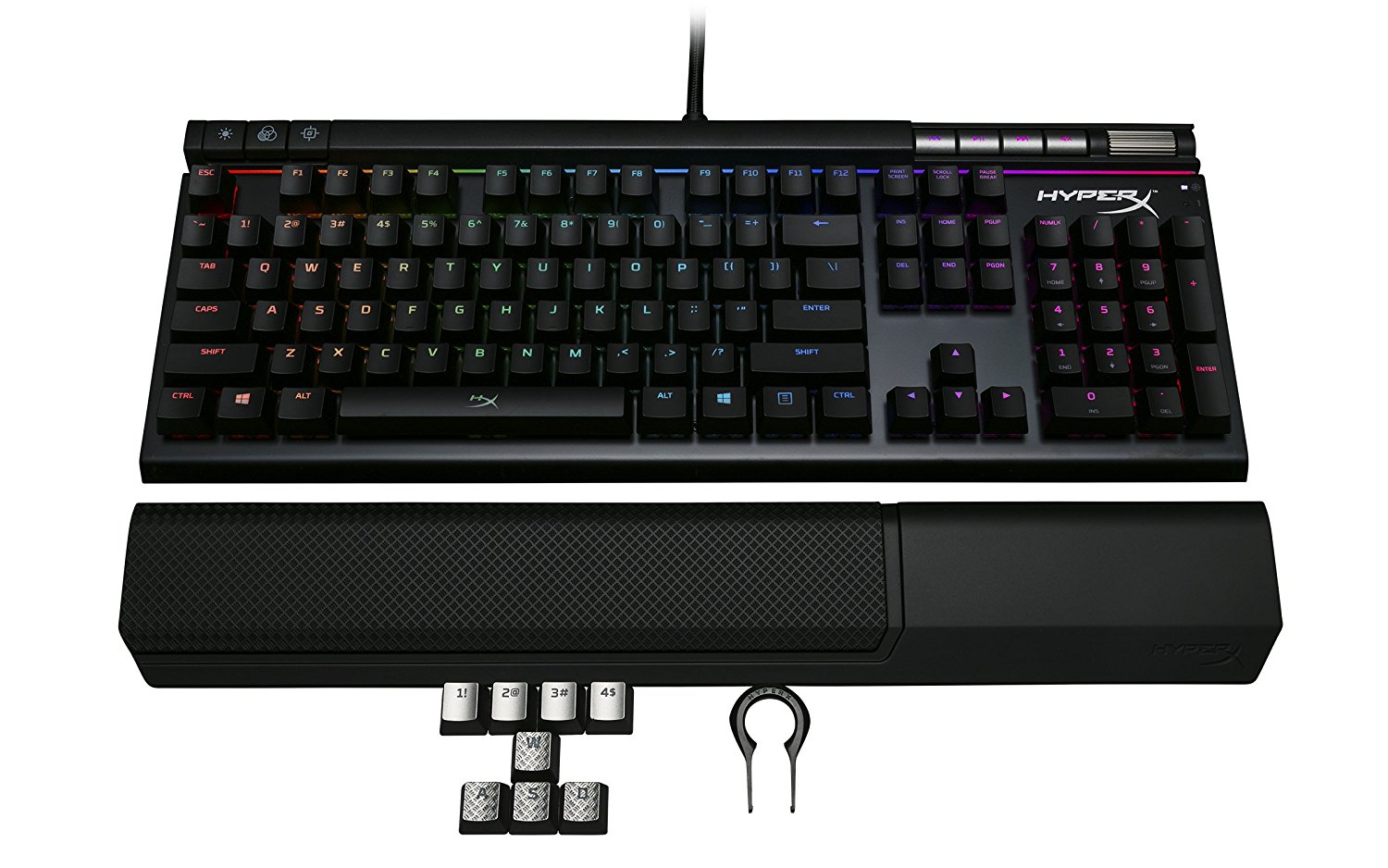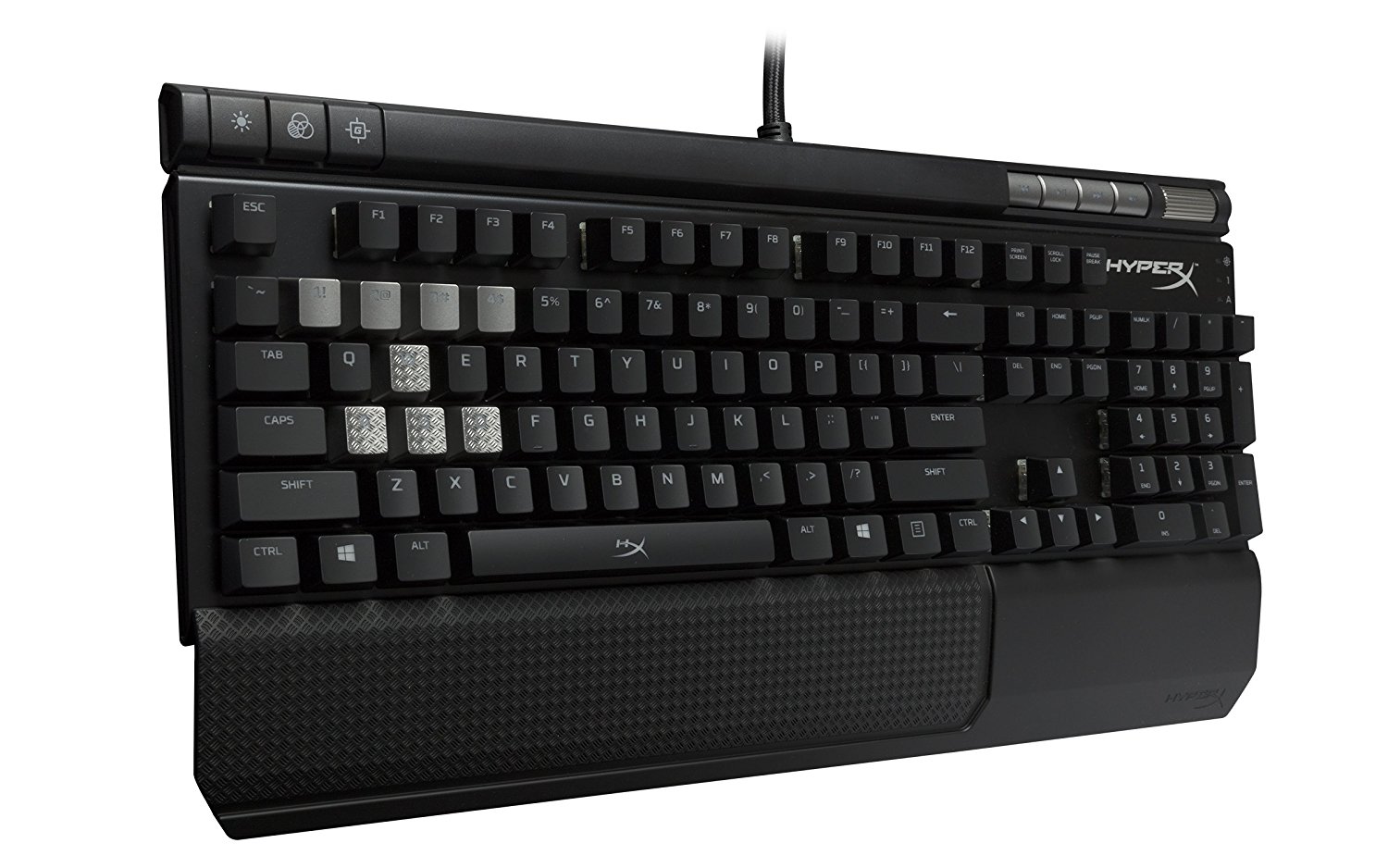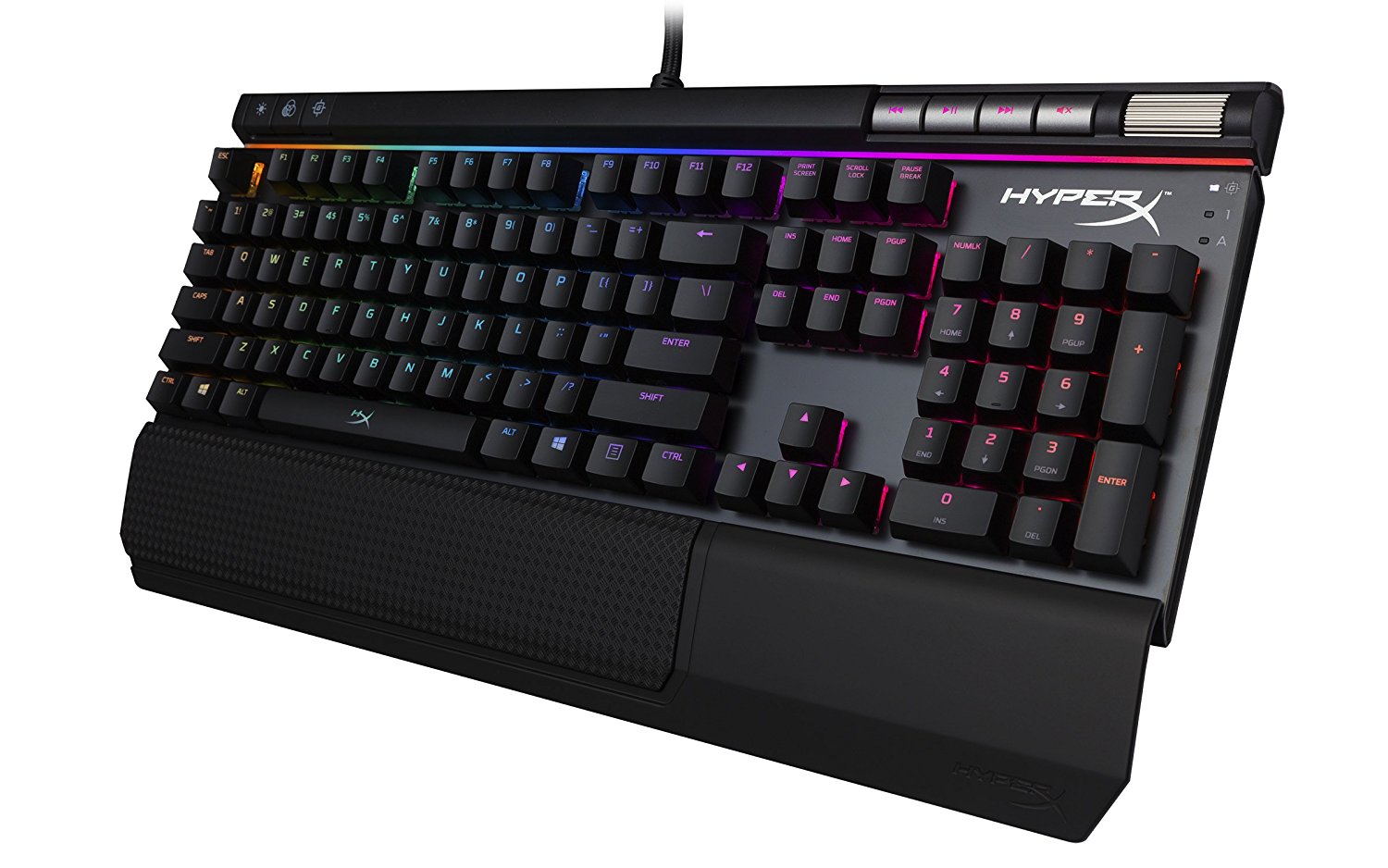Tom's Guide Verdict
With top-notch Cherry MX keys, a gorgeous design and stellar in-game performance, there's a lot to recommend in the HyperX Alloy Elite RGB.
Pros
- +
Authentic Cherry MX keys
- +
Beautiful design
- +
Discrete media keys
- +
Great performance
Cons
- -
Software needs some work
- -
Typing requires some practice
Why you can trust Tom's Guide
After years of manufacturing high-quality gaming headsets, HyperX has tried its hand at both mice and keyboards, with results ranging from "respectable" to "excellent." The HyperX Alloy Elite RGB keyboard ($170) is definitely closer to the "excellent" end of the spectrum.
The Alloy Elite RGB delivers a premium experience — in keeping with its premium price. With top-notch Cherry MX keys, a gorgeous design and stellar in-game performance, there's a lot to recommend in this keyboard. If you can live with a single noticeable drawback — software that's more convoluted than it should be — the Alloy Elite RGB is an easy recommendation.
Design
The Alloy Elite RGB strikes a beautiful balance between appearance and functionality. With a metal frame and high-profile mechanical keys, the device has a pleasing, industrial appearance that looks distinctive without going over the top. In addition to a full complement of keys, you'll also get three buttons on the top left (brightness, onboard profiles, game mode) and discrete media controls on the top right. There's a USB pass-through port, as well as eight extra keycaps (W, A, S, D, 1, 2, 3, 4) and a key-cap puller. It's everything you need, and nothing you don't.

As gaming keyboards go, the Alloy Elite RGB isn't gigantic, either. At 17.5 x 6.5 x 1.0 inches, it's a far sight smaller than some of its space-hogging competitors. (Some Logitech and Razer models breast 18 inches in length.) There's a detachable wrist rest, which is quite comfortable and easy to attach — just don't accidentally leave it in the box and throw it out (as I almost did). It's easy to miss.
MORE: Best Gaming Keyboards 2018
Keys
Unlike Razer, Logitech and SteelSeries, HyperX has not attempted to develop its own key switches, relying instead on good old Cherry MXs. For this reviewer's money, nothing competes with the feel of an authentic Cherry MX, and you can take your pick of Red, Brown or Blue. (Incidentally, if you want the Blue, my advice would be to buy it sooner rather than later. Once Blues run out of stock, Cherry's timeline for replacing them is unpredictable.) Each key features its own customizable RGB backlight, which we'll discuss later.

I reviewed a Cherry MX Brown model. Browns continue to provide an excellent tactile experience, which is responsive enough for heated death matches, but quiet enough to use in an office.
Get instant access to breaking news, the hottest reviews, great deals and helpful tips.
HyperX's new NGenuity software is competent, but the company still needs to iron out a fair number of kinks in it.
On TypingTest.com, I scored 103 words per minute with 12 errors on the Alloy Elite RGB, versus 114 words per minute with seven errors on a Logitech G613 (Romer-G mechanical switches). It's a significant difference — one that I can probably chalk up to the Alloy Elite RGB's smaller profile. I found it proficient for typing overall, but there's no denying that it takes a little getting used to.
Features
The Alloy Elite RGB is the first HyperX keyboard to require software, thanks to its colorful backlighting. HyperX's new NGenuity software is competent, but the company still needs to iron out a fair number of kinks in it.

For example, when you first open the program, you'll see three profiles already in place. Fair enough. But all three profiles are just plain red lights across the board; you have to either make new ones or edit them. That's not as easy as it sounds.
Clicking on Customize will let you alter the lights, the game-mode options and the macros, but you can't actually set up profiles or link those profiles with certain programs. To do that, you'll need to return to the main menu, then click an unmarked Edit button on the bottom of the screen. There's no real benefit to separating these two features, and it creates quite a bit of confusion.
The Alloy Elite RGB strikes a beautiful balance between appearance and functionality.
Furthermore, the keyboard is not very consistent about when it keeps lighting patterns you've programmed. When you set up color patterns, you can use presets, zones (a super-helpful feature, which lets you coordinate nearby keys like the directional pad, the numpad and the WASD cluster) or freestyle (customizing on a key-by-key basis).
However, if you toy around with one of these, then return to the main menu — even if you don't hit Apply — the keyboard will default to whatever setting you experimented with last. You could find your meticulously programmed freestyle pattern replaced with a single solid color across the board. You can go back and retrieve it, of course, but the process is anything but clear, or intuitive.
Furthermore, while linking profiles with games works as advertised (I made a very cool purple-blue-pink scheme for StarCraft), the Alloy Elite RGB isn't so clear on when the game is over. After I quit StarCraft, the game-linked color scheme persisted. I even tried programming a "Windows Default" profile to work with Windows Explorer, but this didn't work until I clicked on the desktop specifically. Most other software reverts to a default profile as soon as you quit a game, making the Alloy Elite RGB feel behind the times. This might also be a good time to point out that the three onboard profiles aren't reprogrammable.
The software does deserve some credit for making it easy to reassign any key and to reprogram macros. But the program isn't up to the high standard that HyperX set for the rest of the Alloy Elite RGB.
MORE: A Guide to Mechanical Keyboard Switches
Performance
If you've used a Cherry MX Brown keyboard, then you already know that the Alloy Elite RGB has excellent in-game performance. I experimented with StarCraft: Remastered, Overwatch, Middle-earth: Shadow of War and World of Warcraft to determine how responsive and accurate the keys were.

Although the keyboard didn't favor any particular genre, there were no weak links in the group, either. Directing a squadron of Terran soldiers against the Zerg horde was as simple as wreaking havoc with a Pandaren Rogue.
The Alloy Elite RGB also deserves some bonus points for offering preset key colors for a variety of games, including Path of Exile, World of Warcraft and Overwatch. While the Overwatch settings aren't as subtle as those in, say, the Razer Synapse software, I still got a kick out of my colorful keyboard while I zoomed around levels as D.Va.
Bottom Line
The HyperX Alloy Elite keyboard is a beautiful, colorful peripheral with top-of-the-line key switches and a sleek aesthetic. The unoptimized software keeps the keyboard from reaching the upper echelons of gaming-keyboard greatness, but this HyperX comes pretty darn close.
At $170, the Alloy Elite RGB is comparable in price (and performance) to the Razer BlackWidow Chroma V2, the Corsair K70, the SteelSeries Apex M750 and the Logitech G810 Orion Spectrum. They all have pros and cons, and if you're going to consider one, you may as well take at least a quick look at the others.
The Alloy Elite RGB offers Cherry MX keys, discrete media controls and swappable key caps, which puts it toward the top of my list. Its software and lighting options aren't quite robust enough to unseat the Corsair, however, which is still just a hair's breadth more comprehensive overall. Still, it's come about as close as any keyboard I've reviewed, and that's impressive for a company's fourth-ever keyboard.
Credit: HyperX

Marshall Honorof was a senior editor for Tom's Guide, overseeing the site's coverage of gaming hardware and software. He comes from a science writing background, having studied paleomammalogy, biological anthropology, and the history of science and technology. After hours, you can find him practicing taekwondo or doing deep dives on classic sci-fi.

